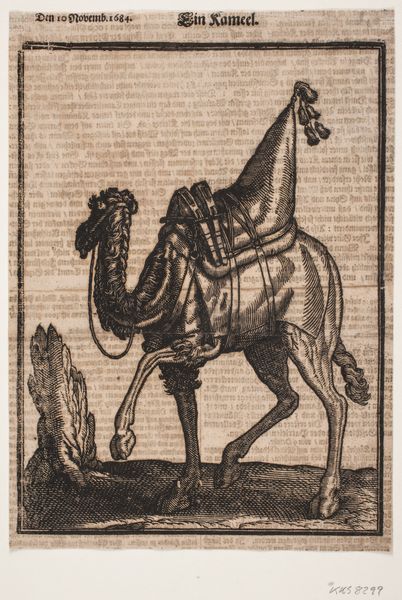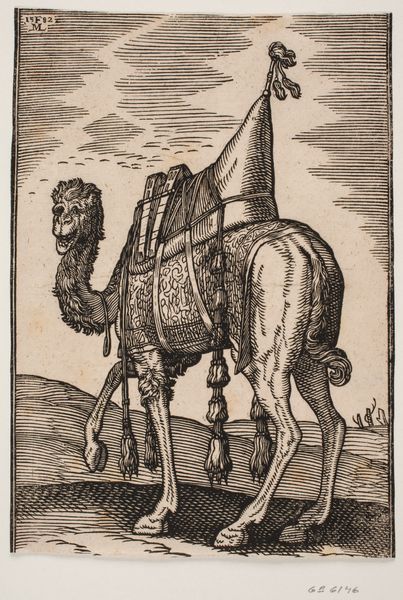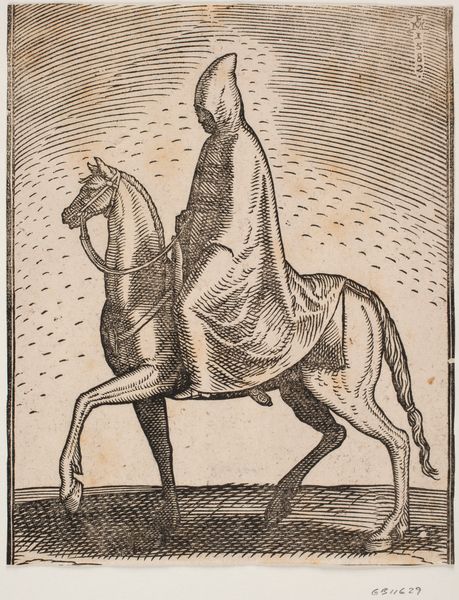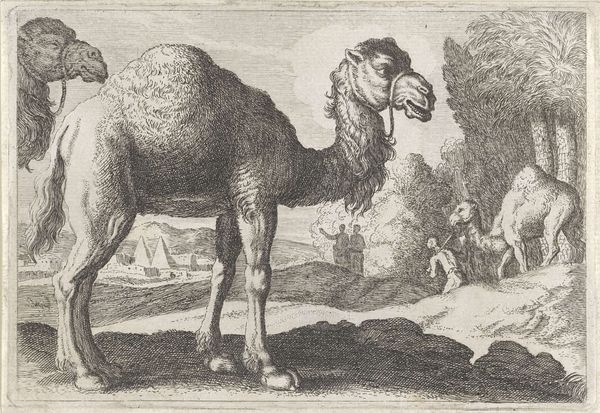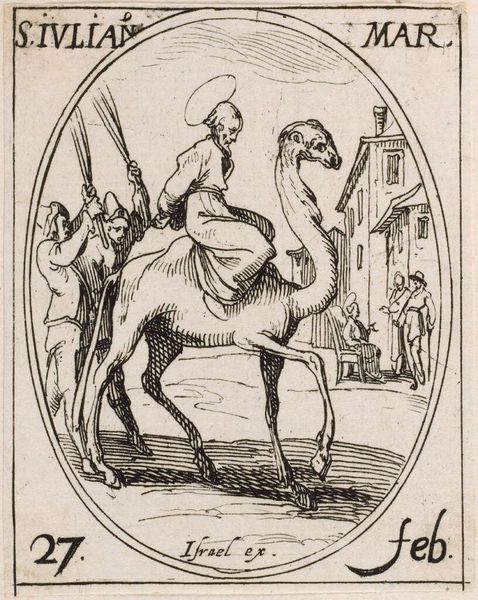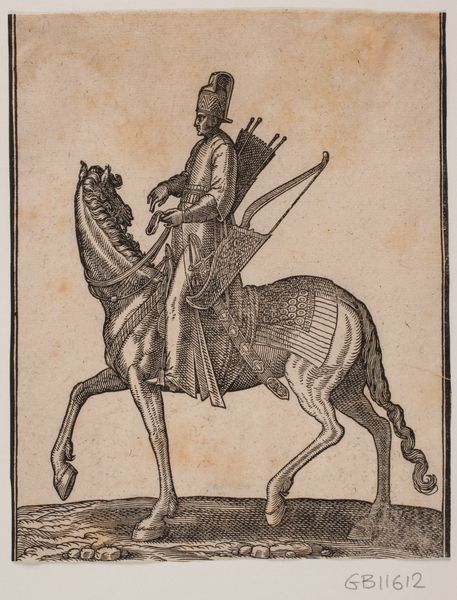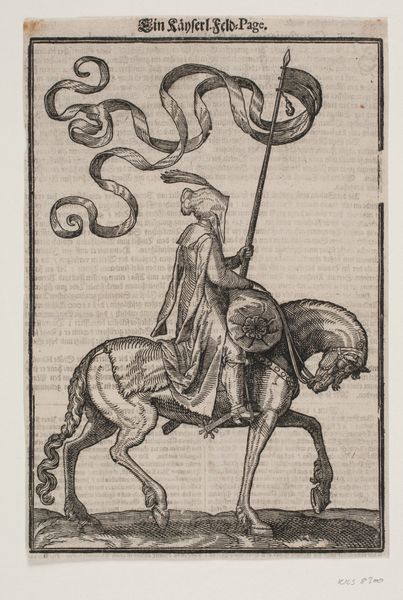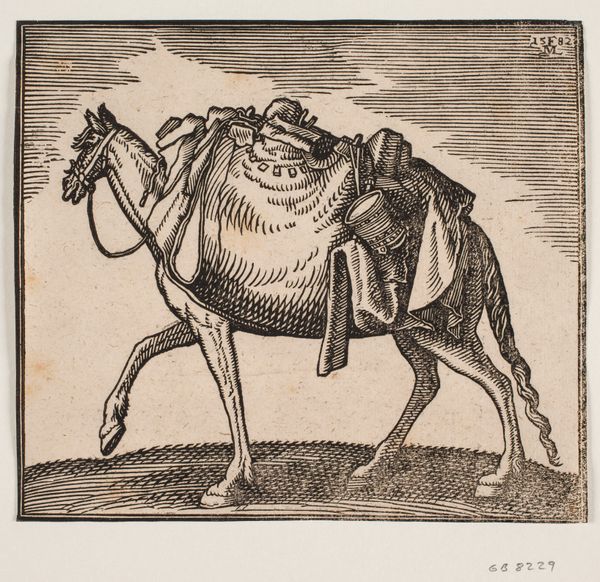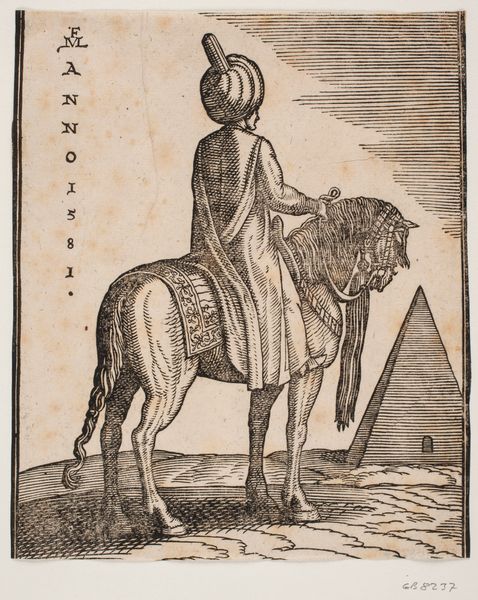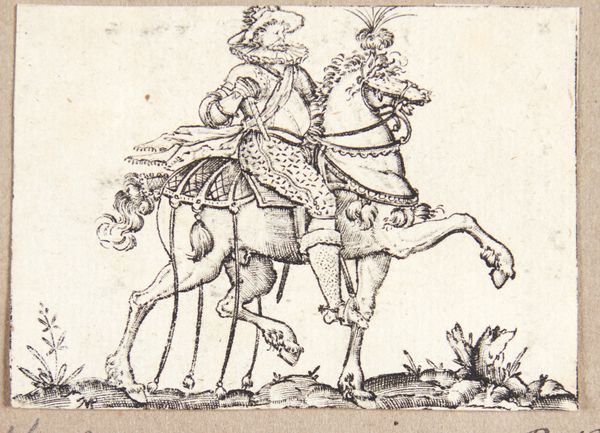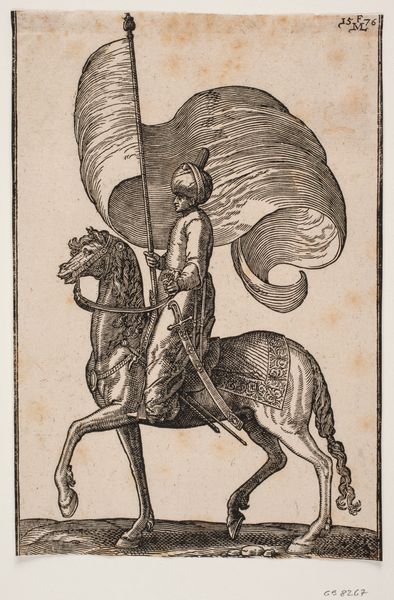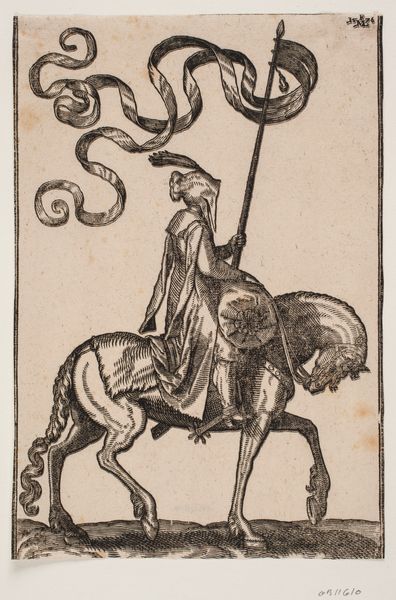
A saddled-up dromedary, profile towards the left, with the animal's head turned away from the wiever 1576
0:00
0:00
drawing, print, woodcut
#
portrait
#
drawing
#
ink drawing
# print
#
figuration
#
form
#
11_renaissance
#
woodcut
#
line
#
northern-renaissance
Dimensions: 202 mm (height) x 154 mm (width) (bladmaal)
Editor: Here we have Melchior Lorck's "A saddled-up dromedary," a woodcut from 1576. There's something very striking about the level of detail in the animal's fur and the saddle. What's your take on this image? Curator: What I see is a glimpse into the power dynamics of the 16th century. Consider the context: Lorck, a European artist, depicts an animal intrinsic to the East. It's not merely a zoological study. The meticulously rendered saddle and bridle highlight control and domination. How does this resonate with the history of trade, colonialism, and the 'othering' of non-European cultures and people? Editor: I hadn’t really considered it in terms of power. It seems the camel is turning away as if reluctant. Is that connected? Curator: Absolutely. The camel's averted gaze, the detailed harness…It prompts questions. Whose gaze is prioritized here? Who benefits from this representation? Look closer. What narratives are silenced, and how does this image perpetuate them? Are we complicit in this historical power dynamic just by viewing it? Editor: So, looking beyond just the technical skill, we have to acknowledge the possible biases within the work itself. Curator: Precisely. We must engage critically. It's about unveiling the layered socio-political dimensions embedded in the visual language. We might examine depictions of animals by artists who share the camel's cultural roots. Editor: That offers a completely new perspective! I will keep an eye on power dynamics within artworks now. Curator: Fantastic! Questioning perspectives allows for meaningful dialogue.
Comments
No comments
Be the first to comment and join the conversation on the ultimate creative platform.
